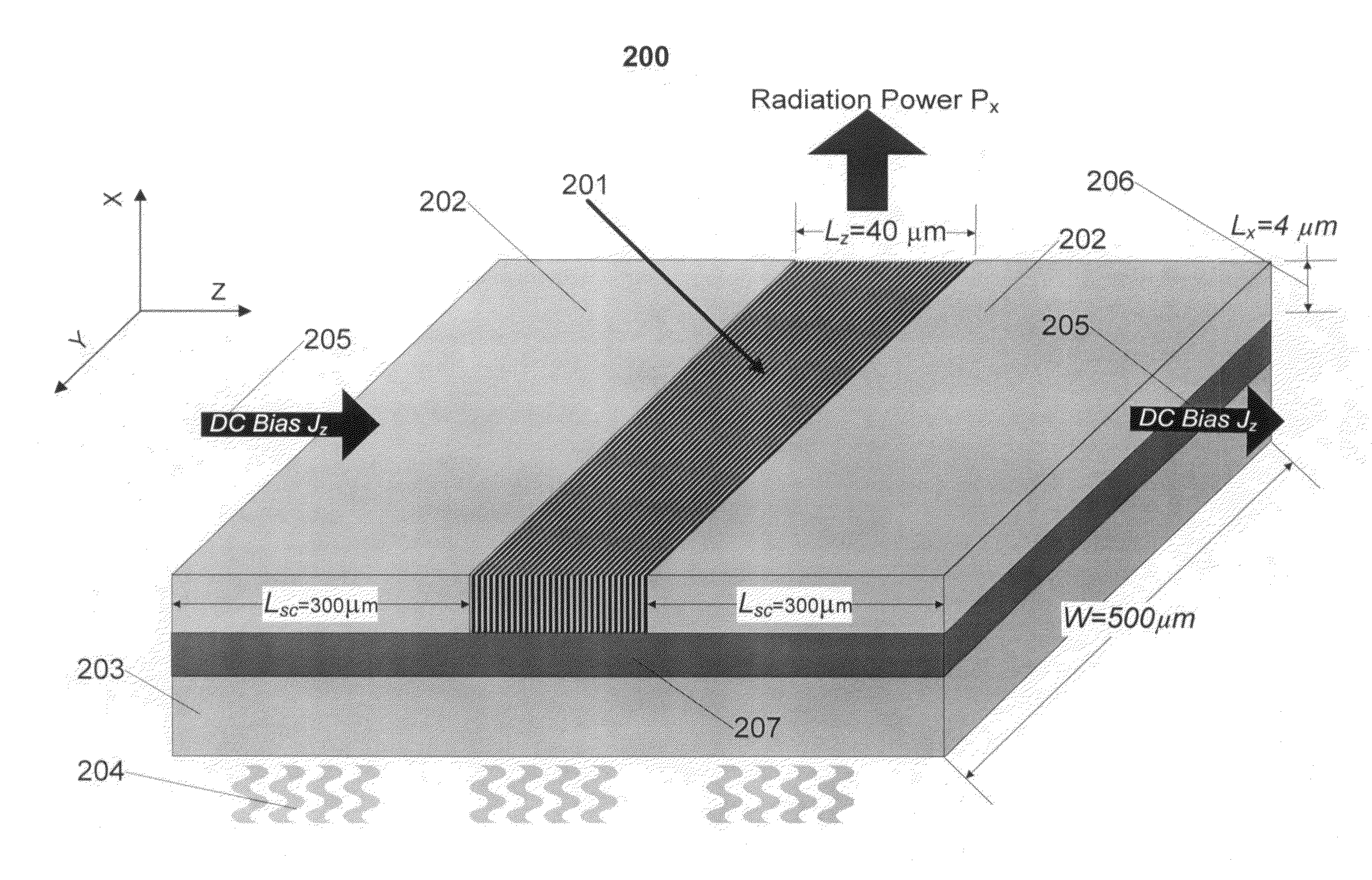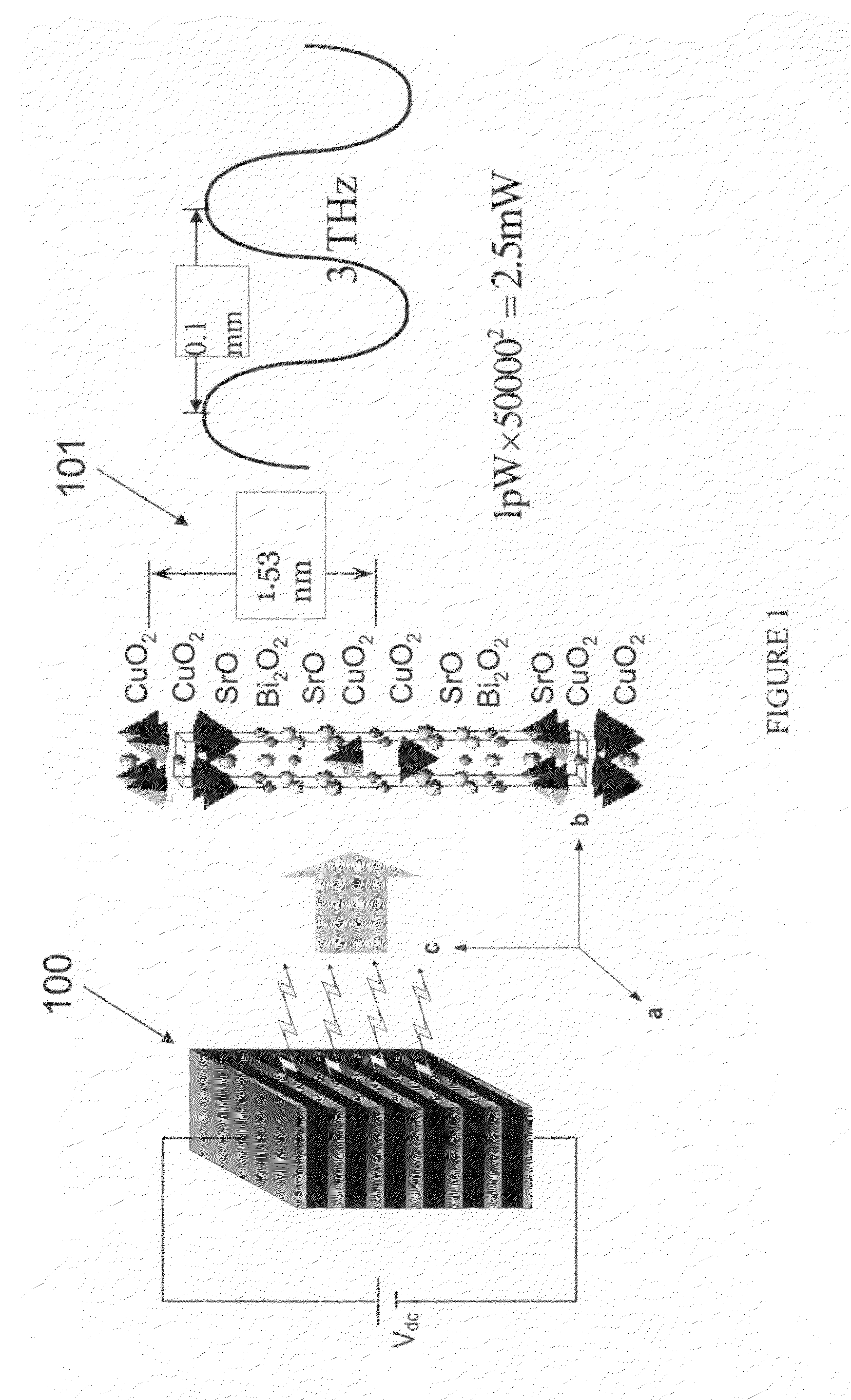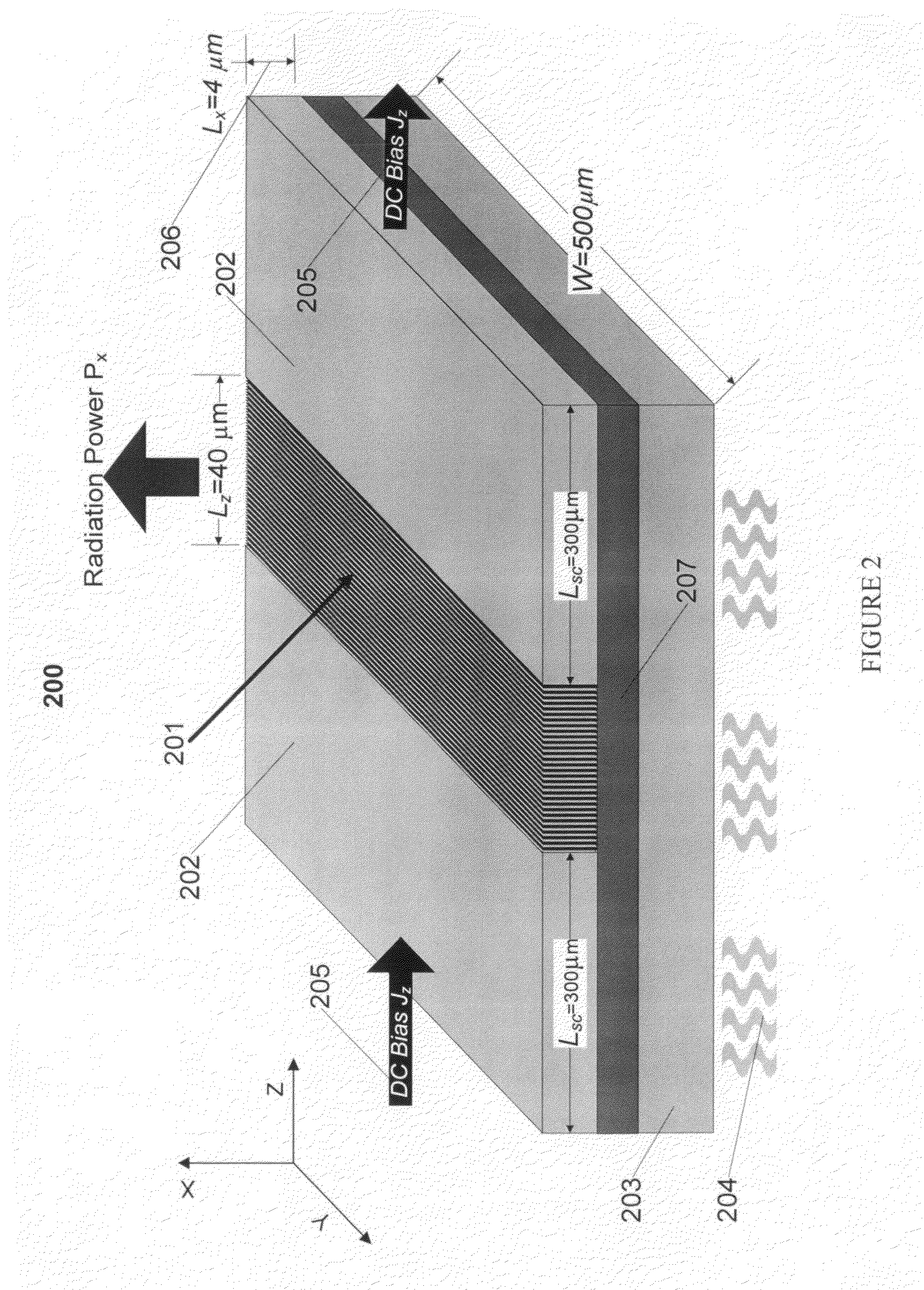Tunable terahertz radiation source
a terahertz radiation and solid state wave technology, applied in the direction of superconductor devices, semiconductor/solid-state device details, pulse techniques, etc., can solve the problems of ineffective thz band tunable power supply, high efficiency of vacuum electronic devices such as backward wave oscillators (bwos), and inability to provide milliwatts of tunable power at high efficiency
- Summary
- Abstract
- Description
- Claims
- Application Information
AI Technical Summary
Benefits of technology
Problems solved by technology
Method used
Image
Examples
Embodiment Construction
[0015]All documents cited in the Detailed Description of the Invention are, in relevant part, incorporated herein by reference; the citation of any document is not to be construed as an admission that it is prior art with respect to the present invention. To the extent that any meaning or definition of a term in this document conflicts with any meaning or definition of the same term in a document incorporated by reference, the meaning or definition assigned to that term in this document shall govern.
[0016]“Terahertz (or THz) radiation,” as used herein, refers to electromagnetic waves at frequencies in the terahertz (1012 Hz) range, and is understood to encompass the region of the electromagnetic spectrum between 300 gigahertz (3×1011 Hz) and 3 terahertz (3×1012 Hz), corresponding to the submillimeter wavelength range between 1 millimeter (high-frequency edge of the microwave band) and 100 micrometer (long-wavelength edge of far-infrared light).
[0017]“Intrinsic Josephson Junction,” o...
PUM
| Property | Measurement | Unit |
|---|---|---|
| power | aaaaa | aaaaa |
| thickness | aaaaa | aaaaa |
| power | aaaaa | aaaaa |
Abstract
Description
Claims
Application Information
 Login to View More
Login to View More - R&D
- Intellectual Property
- Life Sciences
- Materials
- Tech Scout
- Unparalleled Data Quality
- Higher Quality Content
- 60% Fewer Hallucinations
Browse by: Latest US Patents, China's latest patents, Technical Efficacy Thesaurus, Application Domain, Technology Topic, Popular Technical Reports.
© 2025 PatSnap. All rights reserved.Legal|Privacy policy|Modern Slavery Act Transparency Statement|Sitemap|About US| Contact US: help@patsnap.com



